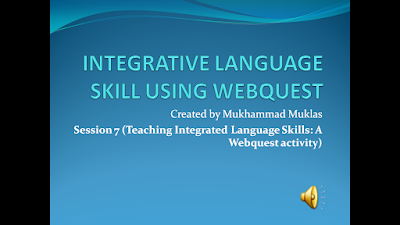Introduction
In this first part, Introduction is giving a description to draws the learners attention to the topic and inspires them into action. It should contain a hook.
Task
second part, Task purpose to set up the goal. This part become the most important aspect of the WebQuest. There is often a Focus Question that defines the task. The task needs to be based on Problem-Based Learning (PBL) and contain a messy problem to solve.
Resources
Third part, Most of resources are taken from internet, so it looks like only the url of the resources.
Process
Forth part is Process. This part is A description of the process the learners should go through in solving the messy problem. The process is broken up into clearly described steps and may designate roles or perspectives to the learners. Giving students roles helps them use their emotional intelligence and demonstrates how different people have different views within the community.
Evaluation
Fifth part is evaluation which is An evaluation is the guidelines for how students will be assessed. It is usually in a Rubric. Evaluation rubrics come in many forms and rubrics designed by the teacher are the most authentic.
Conclusion
in the last part, Conclusion brings closure to the quest, addresses the answering of the Focus Question, and should challenge the learner to act upon what they have achieved within their local environment.
To sum up my Webquest task, I create simple power point presentation as below:
Reference
http://www.webquestdirect.com.au/whatis_awq.asp


















